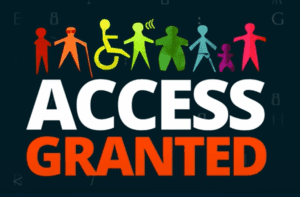Written by Courtney Bolden
Let’s take a trip down memory lane. Think of your favorite vacation – and think about all the planning it took to make the trip a success. Vacation planning can be involved, and it is often even more arduous for travelers with disabilities because in general, the tourism industry is not very accessible or inclusive.
According to the World Health Organization, 15% of the world’s population, or 1 billion people, live with a disability. The mistaken notion that these people do not travel persists. In reality, however, “the disability travel market has a greater economic impact on the travel industry than ever before.” According to Open Doors Organization, between 2018 and 2018, more than 27 million travelers with disabilities spent $58.7 billion on their own travel. This number is up from $34.6 billion in 2015, which shows how quickly this valuable market is growing.
Travel for people with disabilities can be challenging mainly because products and services are not fully equipped to meet many of the needs of the community. Finding information on accessible services, transit, transfers to and from destinations, and booking the necessary accommodations often prove to be costly and extremely time consuming.
The good news is that the idea of barrier-free tourism is gaining traction. As the United Nations Department of Economic and Social Affairs writes: “The impact of accessible tourism […] goes beyond the tourist beneficiaries to the wider society, engraining accessibility into the social and economic values of society.” In addition to the obvious competitive advantages, today’s consumers demand inclusion of the brands they value. But accessible tourism requires cooperation from all stakeholders. Besides the barriers in the built environment and policy, a further obstacle in travel lies with staff who are not trained or experienced in supporting travelers with disabilities. Organizations will require a culture shift in order to have the tools and language to be able to provide the best customer service possible.
Luckily, several major players in the tourism industry have already begun to institute changes in accordance with this change in mindset.
- Marriott International launched its initiative “Room for All” to create a better travel experience for people with disabilities. Marriott’s goal is to “reimagine the traditional ‘accessible room’ by making it more functional, enjoyable, and welcoming to all.” The redesigned rooms feature roll-in showers, beds at appropriate heights, and voice-activation technology to control room temperature and lighting. Marriott International has plans to test other smart solutions in the future, including floor surfaces that are more compatible to wheelchair use, height-adjustable desks, and further guidance on the use of Braille.
- Carnival Cruise Line partnered with KultureCity, a non-profit organization focused on advocating for inclusion and accessibility for people with sensory and non-visible disabilities, to create a sensory-inclusive on-board experience. The cruise line provides KultureCity’s “Sensory Bags” that hold items to help customers manage sensory overload. Some of the items include noise cancelling headphones, fidget tools, and VIP access to accommodations and other necessary adjustments. Importantly, Carnival Cruise Line’s staff received specialized training to assist customers with sensory-related events when necessary.
- Alaska Airlines is committed to making travel more accessible.
These accommodations can and should be extended to events like live music experiences, festivals, and other community-oriented events. Such measures would indubitably have a great impact in promoting cities and emerging countries as welcoming tourist destinations for people with disabilities – and at the same time help businesses tap into the business opportunity.
Improving inclusion requires expert knowledge about what measures to take, and how to institute them. Consider partnering with Ablr to guide you along your inclusion journey – from beginning to end!
For further reading and resources for accessible travel, visit these websites:






